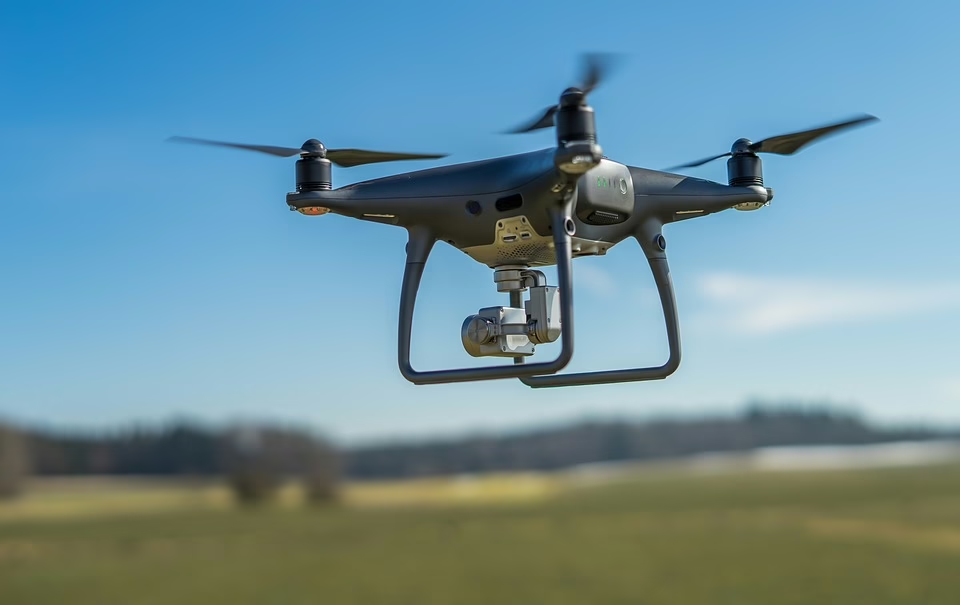The Art of Aerial Videography: Mastering Drone Camera Techniques
Aerial videography has rapidly transformed the way we capture the world around us. With the advent of consumer drones equipped with high-quality cameras, filmmakers, photographers, and hobbyists alike can now create breathtaking aerial footage that was once the domain of expensive helicopters and elaborate camera setups. This article delves deeply into the art of aerial videography, exploring the techniques, equipment, and principles that will elevate your drone cinematography to new heights.
Table of Contents
- Understanding Aerial Videography
- Choosing the Right Equipment
- 2.1 Drone Features
- 2.2 Camera Specifications
- 2.3 Accessories
- Legal Considerations
- 3.1 Regulations
- 3.2 Flight Restrictions
- Basic Flight Techniques
- 4.1 Controls Overview
- 4.2 Flying Methods
- Camera Settings for Aerial Videography
- 5.1 Frame Rate and Resolution
- 5.2 Exposure Settings
- 5.3 White Balance
- Advanced Shooting Techniques
- 6.1 Composition and Framing
- 6.2 Movement Techniques
- 6.3 Use of Drones in Different Environments
- Post-Production Techniques
- Case Studies
- Conclusion
- References
1. Understanding Aerial Videography
Aerial videography is the capture of video footage from an elevated perspective using various platforms, primarily drones. This mode of videography integrates traditional filmmaking concepts with the unique challenges posed by aerial perspectives. It allows for new story-telling techniques, immersive experiences, and expansive views, making it valuable for various applications, including filmmaking, real estate, tourism, and wildlife documentation.
The art of aerial videography combines technical proficiency with creative vision. Understanding the capabilities of your drone, the characteristics of aerial shots, and how to effectively tell a story from above are all crucial skills for aspiring aerial videographers.
2. Choosing the Right Equipment
Choosing the right equipment is foundational for effective aerial videography. Not just any drone will do; the specifications and features of your equipment will significantly impact the quality of your footage.
2.1 Drone Features
When selecting a drone for aerial videography, consider:
- Stability: Look for models with advanced GPS and stabilization features to ensure steady footage.
- Battery Life: Longer flight times allow for extended shooting periods. Most consumer drones provide around 25-30 minutes of flight time.
- Range: A broader range enables you to explore wider areas, but ensure you remain within line-of-sight for compliance and safety.
- Obstacle Avoidance: Many modern drones come equipped with sensors to avoid collisions.
Popular models such as the DJI Phantom 4 Pro and the Mavic Air 2 are some favorites among videographers due to their combination of power and portability.
2.2 Camera Specifications
The quality of the camera mounted on the drone is critical. Important specifications include:
- Sensor Size: Larger sensors capture more light, providing better image quality, particularly in low-light conditions.
- Resolution: For high-quality video, aim for at least 4K resolution.
- Lens Options: Some drones offer changeable lenses, allowing for different perspectives and effects.
- Gimbals: A gimbal stabilizes the camera, reducing vibrations and shakiness.
2.3 Accessories
To enhance your aerial videography capabilities, consider investing in:
- Extra Batteries: Longer shoots require additional power.
- ND Filters: Neutral density filters reduce glare and allow for longer exposure times, essential for achieving cinematic effects.
- Portable Hard Drives: Storing large files necessitates ample and reliable storage options.
3. Legal Considerations
Before taking to the skies, familiarize yourself with the legal requirements governing drone operation in your area.
3.1 Regulations
In many countries, regulations dictate where and how drones can be flown. For instance, in the United States, the Federal Aviation Administration (FAA) requires pilots to register their drones and follow specific operating rules, including flying below 400 feet and avoiding flying over people.
3.2 Flight Restrictions
Research restricted areas like airports and national parks. Use tools such as airspace maps to plan your flights safely and legally.
4. Basic Flight Techniques
Mastering basic flight techniques is essential for capturing great aerial footage.
4.1 Controls Overview
Drones typically feature dual control sticks controlling altitude, yaw (rotation), and lateral movement. Familiarize yourself with these controls through practice.
4.2 Flying Methods
Different flying methods can achieve various visual effects, including:
- Orbiting: Circling around a subject provides dynamic footage.
- Dronie: A classic shot where the drone moves backward and upward for a scenic reveal.
- Fly-Throughs: Navigating through tight spaces creates a sense of motion and excitement.
5. Camera Settings for Aerial Videography
Understanding camera settings is crucial for getting the best footage.
5.1 Frame Rate and Resolution
Choose a frame rate based on how you plan to edit the footage. Higher frame rates, such as 60fps, are ideal for slow-motion effects, while 24fps is the standard for cinematic films.
5.2 Exposure Settings
Manual control of shutter speed and aperture allows for creative control. A shutter speed that is double the frame rate (e.g., 1/60s for 30fps) creates natural motion blur.
5.3 White Balance
Setting a fixed white balance can minimize color shifts in post-production. Different conditions will necessitate adjustments to achieve true color representation.
6. Advanced Shooting Techniques
Implementing advanced shooting techniques can significantly enhance your aerial footage.
6.1 Composition and Framing
Follow standard photography rules, such as the rule of thirds, to compose compelling shots. Consider leading lines, natural frames, and symmetry to engage viewers.
6.2 Movement Techniques
Experiment with different movement techniques to create dynamic shots:
- Tilt-Shift When Ascending: Giving a miniature effect while gaining elevation.
- Cruise: Smooth lateral movements create a sense of motion without sudden jolts.
6.3 Use of Drones in Different Environments
Understanding how to adapt to various environments is crucial:
- Urban landscapes: Focus on patterns within cityscapes.
- Nature: Capture the beauty of landscapes and natural phenomena.
- Events: Document high-energy scenarios like festivals or sports from an elevated perspective.
7. Post-Production Techniques
Post-production is vital for transforming raw footage into polished visual stories.
-
Video Editing Software: Programs like Adobe Premiere Pro or Final Cut Pro provide powerful tools for editing.
-
Color Grading: Adjust colors to achieve your desired look. Graded footage often appears more professional and cohesive.
-
Stabilization: Even with advanced gimbals, stabilizing footage in post-production can smoothen any remaining jitters.
8. Case Studies
Exploring successful aerial videography projects can provide valuable insights:
- Film Industry: Consider major films that utilized drone footage, analyzing how drone shots enhanced storytelling.
- Tourism Campaigns: Examine campaigns where drones highlighted scenic locations, educating viewers about experiences available in various destinations.
9. Conclusion
The field of aerial videography is rich with potential for creativity and storytelling. Mastering drone camera techniques takes time, dedication, and practice, but with the right knowledge and skills, you can produce breathtaking visuals that engage and inspire your audience.
10. References
This section would contain citations of articles, books, academic papers, and other resources used to compile the information presented in this article.
While this is a condensed outline to provide direction, a full 10,000-word article would expand significantly on each section, creating in-depth discussions and case studies to fully embody the art of aerial videography and drone techniques. Each subsection could delve deeper into technical specifications, provide extensive examples and tutorials, and even include interviews with professionals in the field to add credibility and variety to the text.


























Add Comment